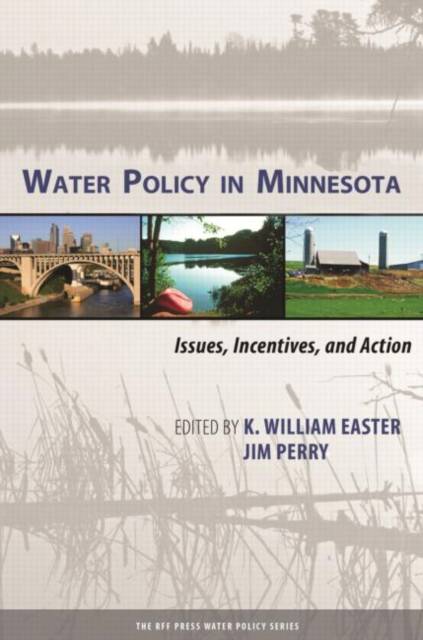
- Afhalen na 1 uur in een winkel met voorraad
- Gratis thuislevering in België vanaf € 30
- Ruim aanbod met 7 miljoen producten
- Afhalen na 1 uur in een winkel met voorraad
- Gratis thuislevering in België vanaf € 30
- Ruim aanbod met 7 miljoen producten
Water Policy in Minnesota
Issues, Incentives, and Action
Omschrijving
Minnesota has a unique role in U.S. water policy. Hydrologically, it is a state with more than 12,000 lakes, an inland sea, and the headwaters of three major river systems: the St Lawrence, the Red River of the North, and the Mississippi. Institutionally, Minnesota is also unique. All U.S. states use Total Maximum Daily Load (TMDL) approaches to addressing impaired waters. Every TMDL requires a substantial investment of resources, including data collection, modeling, stakeholder input and analysis, a watershed management plan, as well as process and impact monitoring. Minnesota is the only state in the union that has passed legislation (the 2007 Clean Water Legacy Act) providing significant resources to support the TMDL process.
The book will be an excellent guide for policymakers and decision makers who are interested in learning about alternative approaches to water management. Non-governmental organizations interested in stimulating effective water quality policy will also find this a helpful resource. Finally, there are similarities between the lessons learned in Minnesota and the goals of water policy in several other states and nations, where there are competing uses of water for households, agriculture, recreation, and navigation.
Specificaties
Betrokkenen
- Uitgeverij:
Inhoud
- Aantal bladzijden:
- 336
- Taal:
- Engels
- Reeks:
Eigenschappen
- Productcode (EAN):
- 9781617260865
- Verschijningsdatum:
- 22/06/2011
- Uitvoering:
- Hardcover
- Formaat:
- Genaaid
- Afmetingen:
- 155 mm x 231 mm
- Gewicht:
- 566 g

Alleen bij Standaard Boekhandel
Beoordelingen
We publiceren alleen reviews die voldoen aan de voorwaarden voor reviews. Bekijk onze voorwaarden voor reviews.







